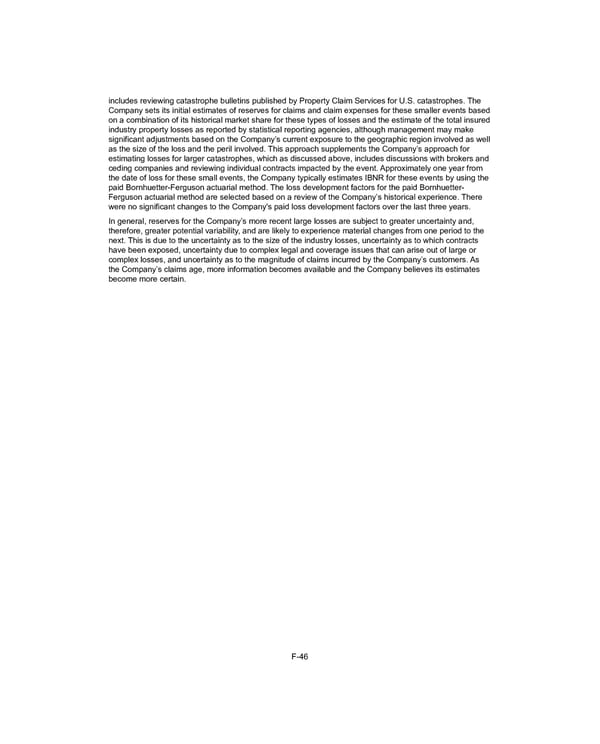includes reviewing catastrophe bulletins published by Property Claim Services for U.S. catastrophes. The Company sets its initial estimates of reserves for claims and claim expenses for these smaller events based on a combination of its historical market share for these types of losses and the estimate of the total insured industry property losses as reported by statistical reporting agencies, although management may make significant adjustments based on the Company’s current exposure to the geographic region involved as well as the size of the loss and the peril involved. This approach supplements the Company’s approach for estimating losses for larger catastrophes, which as discussed above, includes discussions with brokers and ceding companies and reviewing individual contracts impacted by the event. Approximately one year from the date of loss for these small events, the Company typically estimates IBNR for these events by using the paid Bornhuetter-Ferguson actuarial method. The loss development factors for the paid Bornhuetter- Ferguson actuarial method are selected based on a review of the Company’s historical experience. There were no significant changes to the Company's paid loss development factors over the last three years. In general, reserves for the Company’s more recent large losses are subject to greater uncertainty and, therefore, greater potential variability, and are likely to experience material changes from one period to the next. This is due to the uncertainty as to the size of the industry losses, uncertainty as to which contracts have been exposed, uncertainty due to complex legal and coverage issues that can arise out of large or complex losses, and uncertainty as to the magnitude of claims incurred by the Company’s customers. As the Company’s claims age, more information becomes available and the Company believes its estimates become more certain. F-46
 2021 Annual Report Page 188 Page 190
2021 Annual Report Page 188 Page 190